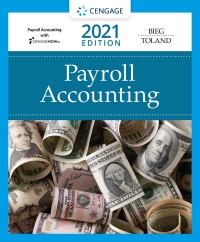

Madison Capital Group is considering allocating a limited amount of capital investment funds among four proposals. The amount of proposed investment, estimated income from operations, and net cash flow for each proposal are as follows: Year Investment $ 540,000 Proposal A: 1 $ 2 3 4 $ $ $ $ $ Income from Operations 42,000 42,000 42,000 (18,000) (18,000) 90,000 Net Cash Flow $ 150,000 $ 150,000 $ 150,000 $ 90,000 $ 90,000 $ 630,000 5 Proposal B: $ 250,000 1 2 3 $ $ $ $ $ $ 50,000 40,000 30,000 15,000 15,000 150,000 $ $ $ $ $ $ 100,000 90,000 80,000 65,000 65,000 400,000 4 5 Proposal C: $ 640,000 1 2 3 4 $ $ $ $ $ $ 92,000 82,000 82,000 62,000 32,000 350,000 $ $ $ $ $ $ 220,000 210,000 210,000 190,000 160,000 990,000 5 Proposal D: $ 310,000.00 1 $ 68,000.00 2 $ 38,000.00 3 $ (2,000.00) 4 $ (2,000.00) 5 $ (2,000.00) $ 100,000.00 $ 130,000.00 $ 100,000.00 $ 60,000.00 $ 60,000.00 $ 60,000.00 $ 410,000.00 The company's capital rationing policy requires a maximum cash payback period of three years. In addition, a minimum average rate of return of 12% is required on all projects. If the preceding standards are met, the net present value method and present value indexes are used to rank the remaining proposals. Instructions 1. Compute the cash payback period for each of the four proposals. Round to nearest month. 2. Giving effect to straight-line depreciation on the investments and assuming no estimated residual value, compute the average rate of return for each of the four proposals. Round to one decimal place. 3. Using the following format, summarize the results of your computations in parts (1) and (2). By placing a check mark in the appropriate column at the right, indicate which proposals should be accepted for further analysis and which should be rejected. Cash Payback Period (List) Average Rate of return (List) Accept for Further Analysis OR Proposal A Reject B D 4. For the proposals accepted for further analysis in part (3), compute the net present value. Use a rate of 12% and the present value of $1 table appearing in the chapter. Round to the nearest dollar. 5. Compute the present value index for each of the proposals in part (4). Round to two decimal places. 6. Rank the proposals from most attractive to least attractive, based on the present values of net cash flows computed in part (4). 7. Rank the proposals from most attractive to least attractive, based on the present value indexes computed in part (5) 8. Using Excel, compute the internal rate of return. 9. Based upon the analyses done above, comment on the relative attractiveness of the proposals ranked in parts (6) and (7). Which provides the most useful results. 10. If you were making the investment decision, show how you would rank the proposals, and by what method you made your decision. 11. What other non-financial factors should be considered








